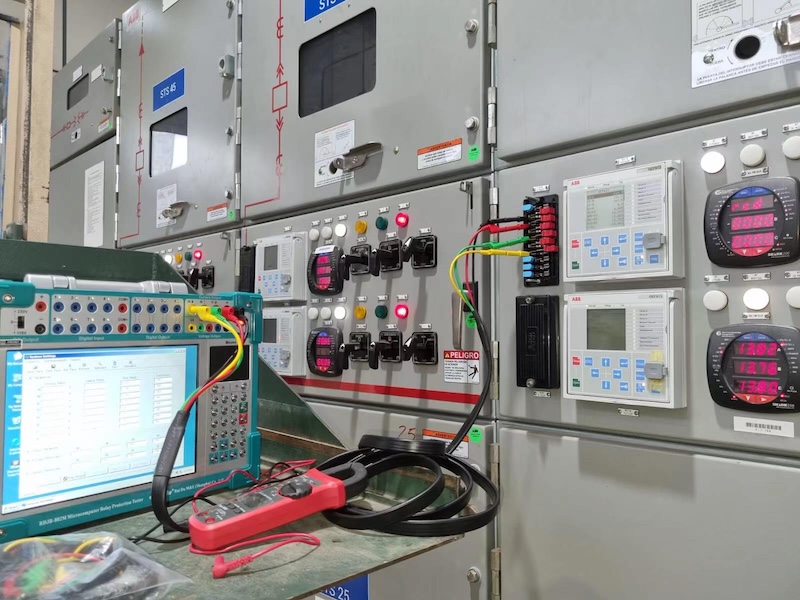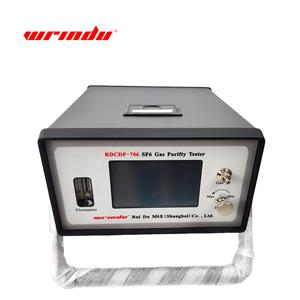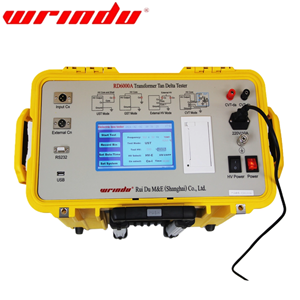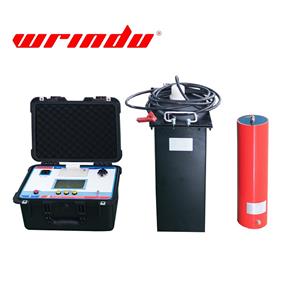A complete analysis of the use of secondary injection tester

The Basic Principle and Function of Secondary Injection Tester
1. Basic principles
The three phase relay test kit tests the relay protection device by simulating various faults in the power system and electrical quantities under normal operating conditions, such as voltage, current, frequency, etc. It is mainly based on electronic, computer, and digital signal processing technology, which converts pre-set parameters into actual electrical signal output. For example, the standard three-phase relay instrument’s internal three-phase voltage and current generator can accurately generate three-phase voltage and current signals with flexible amplitude, phase and frequency. These signals can simulate various fault conditions in the power system, such as three-phase short circuits, two-phase short circuits, single-phase ground short circuits, and load statuses during regular operation.
2. Main functions
1. Conventional electrical quantity output function
It can output high-precision AC voltage, AC, DC voltage, and DC signals. The AC voltage can generally output 0-120V, and the AC can output 0-40A or even higher, meeting the requirements of different relay protection devices for the input range of electrical quantities. For example, for some high-voltage line protection devices, it is necessary to simulate a higher fault current for testing, and the relay protection instrument's powerful current output capability can well meet this demand.
2. Phase adjustment function
The phase relationship between voltage and current can be accurately adjusted, and the adjustment range is usually 0° - 360°. This function is key in testing some phase-related protection principles, such as power direction protection. The protection device's action characteristics under different phase conditions can be accurately verified by changing the voltage and current phase.
3. Frequency adjustment function
It can simulate the frequency changes in the power system, and the adjustment range is generally between 45Hz and 55Hz. Some special relay protection devices, such as low-frequency load-shedding devices, are susceptible to system frequency changes. The frequency adjustment function of the relay protection instrument can be used to conduct comprehensive tests on such devices.
4. Fault simulation function
It can simulate various fault types. In addition to the various short-circuit faults mentioned above, it can simulate abnormal operating conditions such as oscillation and overload. For example, when simulating system oscillation, the relay protection instrument can output the corresponding electrical quantity signal according to the set oscillation period, oscillation amplitude and other parameters to check whether the action behaviour of the relay protection device during the oscillation process meets the requirements.
Types and Characteristics of Relay Protection Instruments
Classification by the number of output channels
1. Single-phase relay tester
The structure is relatively simple, with only one voltage output channel and one current output channel. It is suitable for some occasions where the test requirements are not high, and only simple electrical quantity changes need to be simulated, such as testing some simple protection devices in small distribution networks. Its advantages are its small size, ease of carrying, and relatively low price; its disadvantages are its relatively single function and inability to simulate complex three-phase electrical quantity relationships and fault scenarios at the same time.
2.Three-phase relay test kit
It has a three-phase voltage output channel and a three-phase current output channel. It can simultaneously output three-phase electrical quantity signals and simulate various complex three-phase faults and normal operating conditions. It is widely used in relay protection device testing in substations, power plants and other places. It can easily simulate three-phase short circuits, asymmetric short circuits and other faults and comprehensively test the performance of relay protection devices. Powerful functions characterise it but are relatively large in size, weight, and price.
Classification by degree of automation
1. Manual relay tester
The operation mainly relies on manually adjusting various parameters, such as voltage amplitude, current size, phase, etc. This type of relay requires the operator to have high professional knowledge and experience. Still, its cost is low and suitable for some small power companies or training and teaching scenarios without high automation and limited budgets. For example, in the basic experimental teaching of some power vocational colleges, manual relays can help students better understand the basic operating principles and parameter adjustment methods of relays.
2. Automatic relay protection instrument
Equipped with advanced microprocessors and human-computer interaction interfaces, it can automatically complete a series of complex test tasks through pre-written test programs. The operator only needs to set up basic information such as test items and parameters, and the relay protection instrument can automatically output various electrical quantity signals according to the set process and record and analyse the test results. Automatic relay protection instruments significantly improve test efficiency and accuracy, reduce human operation errors, and are widely used to verify relay protection devices in large power systems. However, they are expensive and require specific computer operation skills and programming knowledge of operators.




